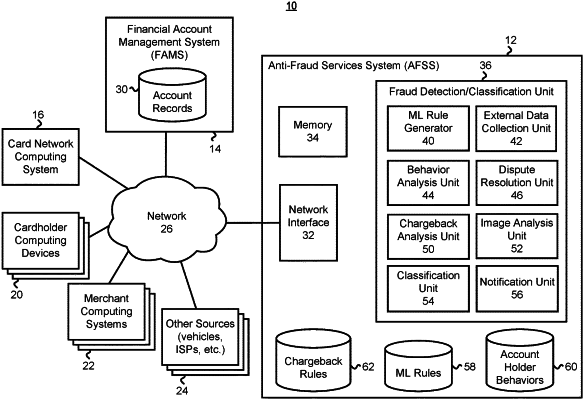| CPC G06Q 20/4016 (2013.01) [G06Q 20/3224 (2013.01)] | 20 Claims |

|
1. A computer-implemented method for detecting whether electronic fraud alerts are false positives prior to transmission to customer mobile devices based upon customer data, the method comprising:
training a machine learning program using fraud classifications made in connection with at least one of a type of transaction data or a value of transaction data associated with a plurality of financial accounts, such that the machine learning program learns a characteristic of the transaction data that is indicative of different fraud classifications, wherein the different fraud classifications include a lost or stolen card, an account takeover, a counterfeit card, or an application fraud;
receiving, by one or more processors, transaction data detailing a financial transaction associated with a customer;
determining, by the one or more processors and based at least in part on the transaction data, that an electronic fraud alert is to be generated for the financial transaction;
determining, by the machine learning program, and based at least in part on a type of the transaction data or a value of the transaction data, a reason why the electronic fraud alert was generated, wherein the reason determined by the machine learning program includes at least one of:
an inconsistency between a location associated with the customer and a transaction location, at a time associated with the financial transaction; or
an unusual merchant or unusual item purchased associated with the financial transaction;
determining, by the one or more processors, that the reason why the electronic fraud alert was generated can be verified by customer data;
receiving, by the one or more processors, customer data;
verifying, by the one or more processors and based at least in part on the customer data, that the electronic fraud alert is not a false positive; and
transmitting the electronic fraud alert to a mobile device of the customer.
|